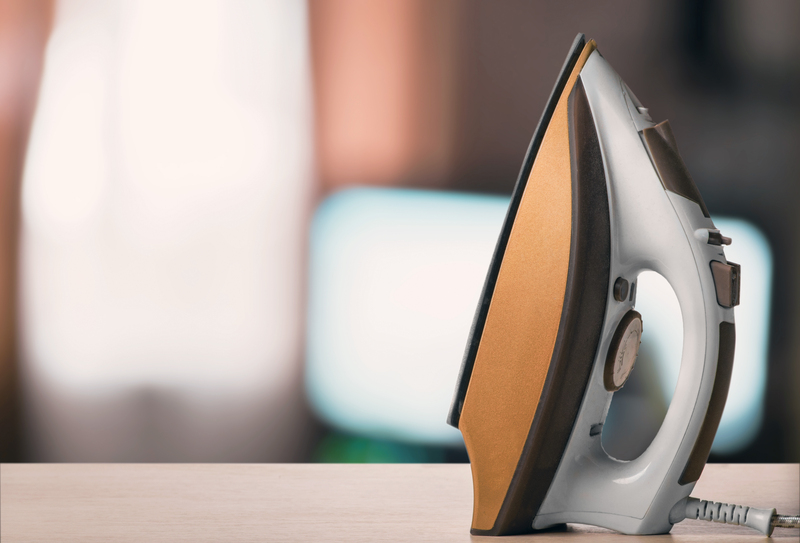Turning Your Home into a Damp-Free Sanctuary
Posted on 28/05/2025
Turning Your Home into a Damp-Free Sanctuary: Your Complete Guide
Are you tired of condensation on your windows, patches of mold climbing up the walls, or that telltale musty smell that never quite goes away? Dampness is a silent intruder that can undermine not just your home's structure, but also your family's health and comfort. Transforming your living space into a damp-free sanctuary is more important than ever in both old and new properties.
Whether you're dealing with recurring condensation, mystery wet patches, or persistent mold, this all-inclusive guide will help you discover how to identify, prevent, and banish damp for good. With practical steps, expert insights, and actionable tips, you're about to learn how to keep your sanctuary healthy, safe, and completely dry.

Understanding the Different Types of Damp in the Home
Before you can make your house a damp-free haven, it's essential to understand the enemies you're up against. Dampness in homes typically comes in three major forms:
- Condensation: The most common type of damp, often caused by activities like showering, cooking, and drying clothes indoors. It forms when warm, moist air hits cold surfaces like windows or walls.
- Rising Damp: This occurs when groundwater seeps upwards through the walls or floors, carrying moisture and salts. It's most common in older properties with broken or missing damp-proof courses.
- Penetrating Damp: This happens when water moves horizontally through walls and ceilings, often due to leaks, damaged gutters, or cracks in external walls.
Each type needs a tailored approach for effective damp removal and control. Let's dive into how to spot them.
Spotting the Signs of Damp
Damp doesn't just announce itself -- it shows up in subtle ways first. Be vigilant for:
- Water stains or tide marks on walls
- Mold patches (often black or green and typically found in corners or window reveals)
- Peeling paint or wallpaper
- Musty odours
- Rotting wood or crumbling plaster
Regularly inspecting your home's trouble spots -- behind furniture, inside closets, around windows, and under sinks -- can help you catch damp early.
Why is a Damp-Free Home Important?
Living in a damp-free sanctuary isn't just about comfort. Persistent dampness can have serious implications:
- Health Risks: Continuous exposure to mold spores, bacteria, and dust mites linked to damp can cause or worsen respiratory conditions, asthma, eczema, and allergies.
- Structural Damage: Damp can eat away at timber, weaken plaster, and compromise insulation -- leading to expensive repairs.
- Reduced Property Value: Signs of mold or damp instantly make homes less attractive to buyers or tenants.
- Energy Efficiency: Damp insulation offers less resistance to heat flow, costing you more in heating bills.
Preventing and eliminating damp in your home safeguards your investment, the building's integrity, and, most critically, your wellbeing.
How to Turn Your Home into a Damp-Free Sanctuary
1. Control Moisture Sources
If you want a damp-free home, start by controlling the amount of moisture produced indoors. Here's how:
- Use lids on pans when cooking to reduce steam.
- Dry clothes outdoors when possible, or use a vented tumble dryer.
- Wipe down wet surfaces in kitchens and bathrooms regularly.
- Install extractor fans in moisture-prone areas like kitchens, bathrooms, and laundry rooms.
- Keep bathroom and kitchen doors closed while in use to stop steam spreading to other rooms.
Tip: Consider investing in a dehumidifier if condensation is a recurring issue. Modern units are efficient and can remove several liters of water from the air daily!
2. Improve Home Ventilation
Good ventilation is the cornerstone of a dry, healthy living environment. Without it, moist air gets trapped, creating the ideal conditions for condensation and mold. Try these ventilation tips:
- Open windows regularly, even in winter, to let stale, moisture-laden air escape.
- Fit trickle vents to windows to allow a continuous flow of fresh air.
- Unblock chimneys and air bricks -- even if your fireplaces aren't in use, they help your house "breathe."
- Maintain mechanical ventilation systems (like MVHR or PIV systems) by cleaning filters regularly.
Ensuring your home is well ventilated is one of the simplest long-term solutions to keeping your home damp-free.
3. Invest in Proper Insulation
- Install cavity wall insulation (if suitable for your property).
- Add loft or attic insulation to reduce heat loss.
- Upgrade old single-glazed windows to double or triple glazing for improved thermal performance.
- Insulate cold water pipes (lagging) to prevent condensation.
*Well-insulated homes stay warmer, are more energy efficient, and significantly less prone to condensation-based damp problems.*
4. Deal With External Sources of Damp
If water is getting into your home from the outside, no amount of ventilating or cleaning will offer a permanent fix. Here's how to deal with external sources:
- Check gutters and downpipes for leaks, clogs, or overflows.
- Inspect exterior walls for cracks or missing mortar and have them repaired.
- Ensure the ground outside slopes away from your home (not towards it), reducing the risk of rising damp.
- Replace damaged roof tiles promptly.
- Check for defective window and door seals that could let water in during rain.
*Maintaining your home's envelope is one of the most effective ways to ensure a damp-free sanctuary year-round.*
5. Treat Existing Damp and Mold
Already got damp or mold? Don't ignore it! Swift, targeted action will prevent escalation:
- Remove surface mold with an anti-mold spray or a diluted bleach solution (wear gloves and ventilate the area well).
- Strip off and replace heavily mold-affected wallpapers or plasters.
- Paint affected walls with mold-resistant paints after treatment.
- Consult a damp-proofing specialist for persistent or structural damp issues.
Always tackle the root cause; simply cleaning away mold is a quick fix unless you eliminate the moisture supply.
6. Maintain Your Home's Damp-Proof Course
In older properties, the failure of the damp-proof course (DPC) is a common cause of rising damp. Regularly inspect for:
- Bridged DPC where soil, render, or decking is stacked up above the DPC line outside.
- Broken or missing DPC that allows ground water to rise into the walls.
A professional DPC installation can be a lasting investment toward a truly damp-free home.
Preventing Future Damp Issues
Once you've eliminated existing dampness, keeping your home damp-free is all about ongoing care:
- Fix leaks immediately. Never ignore dripping pipes, overflowing tanks, or blocked gutters.
- Keep up with exterior maintenance. Regularly inspect the roof, pointing, guttering, and external seals.
- Monitor moisture-prone rooms. Use a hygrometer if you're worried about humidity levels (aim for 40-60%).
Note: Modern energy-efficient homes are often airtight, so deliberate ventilation and dehumidification are even more vital.

Frequently Asked Questions About Keeping Homes Damp-Free
Is Damp Proof Paint a Solution?
Damp-proof paints and sealants provide a temporary barrier for minor condensation problems. However, they don't tackle the underlying causes. For persistent damp (like rising or penetrating damp), always treat the source.
Can Houseplants Cause Damp?
Plants can marginally increase airborne humidity but rarely cause major damp issues in well-ventilated homes. Overwatering large numbers of plants, especially in closed rooms, can contribute to moisture buildup. Balance is key.
Which Areas Are Most Prone to Damp?
Kitchens, bathrooms, basements, and rooms with poor ventilation or external walls are most at risk. Regularly inspect these "damp hotspots" for early signs.
Is a Dehumidifier Worth It?
Absolutely. Dehumidifiers efficiently remove excess moisture from the air, making them ideal for problem rooms, especially in colder months. They're particularly useful to keep your sanctuary dry and healthy if other solutions are not immediately possible.
Key Takeaways for Building a Damp-Free Sanctuary
- Identify the type of damp in your home and its root cause before taking action.
- Reduce moisture sources and improve day-to-day ventilation to prevent condensation and mold.
- Upgrade insulation and maintain your property's outer envelope to block water ingress.
- Treat damp and mold proactively -- don't wait until they escalate.
- Staying vigilant with regular home maintenance preserves a damp-free, healthy sanctuary for the long run.
By following the steps and tips outlined above, any homeowner can enjoy a truly damp-free home. Not only will you protect your family's health and comfort, but you'll also preserve -- and potentially increase -- your property's value and energy efficiency.
Make these practices part of your routine and transform your house into a genuinely dry, welcoming, and damp-free sanctuary for years to come.



